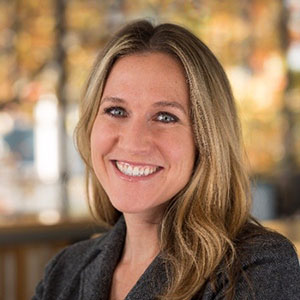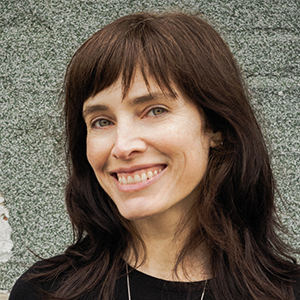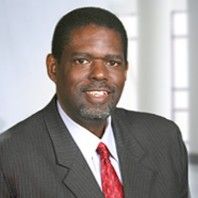What are you and your company doing to help reduce embodied carbon emissions?
Hanna Swaintek
PE, LEED AP ID+C, Senior Manager, Paladino and Company
We bring embodied carbon to the forefront for projects and clients in a variety of ways, and we have the most impact when we work as the sustainability integrator for the team. Embodied carbon injects another layer of complexity to the already intricate design and construction integration process, crossing project phases and involving a lot of players. By Paladino acting as the sustainability integrator and managing the embodied carbon process, using our carbon model as the integration tool, each partner can do what they do best and feed into the overall carbon model.
We are in the midst of a market transformation around embodied carbon and we believe that the first stages of market transformation are learning and connection. We contribute to both of these on our projects by producing and distributing educational materials and guidance and creating new points of collaboration and connection within the supply chain and development process.
Our clients are inspiring me every day with their curiosity and commitment to making strides in embodied carbon measurement and decarbonization. We are invited to challenge conventional construction practices, to bring procurement into the process, and to hold the team accountable. It’s incredibly exciting, and the creative solutions are all around us.

Hanna Swaintek
Vasilis Kalfountzos
Civil Engineer and Business Developer at One Click LCA
After graduating in the UK as a Civil & Structural Engineer, I shifted my focus towards sustainability because I found that overspecification and poor material efficiency were prevalent. My first job was as an environmental advisor in Greece where I first came in touch with Embodied Carbon and Life Cycle Assessments. It was at this point that I realized that LCA’s were implemented way too late in the design process to even have an impact in design considerations and more importantly in material choice optimization.
By joining One Click LCA I was given the opportunity and the tools to help promote concept and schematic design LCAs and embodied carbon studies in North America. I work with designers to help them reduce embodied carbon and save materials using a combination of early phase and detailed design LCA to guide their work.
Parametric optimization is a big opportunity in the early design process, and I also had the pleasure of overseeing the development of our Rhino and Grasshopper plugins for One Click LCA which we recently released. Introducing carbon as a function in parametric design allows for a simultaneous approach to embodied carbon efficiency, building morphology and material choice.
At One Click LCA we strive to accelerate the decarbonization of the global construction sector by developing a platform for low-carbon construction projects, products, portfolios and business. Our goal is to have the industry manage carbon the same way as cost is managed; from early on, and when any options are considered.

Vasilis Kalfountzos
Lara Kaufman
Design Director, Architect, LEED AP, Studio Gang
At Studio Gang, creatively repurposing existing structures and carbon-intensive materials has been at the heart of many projects, most recently the Beloit College Powerhouse, which transformed a decommissioned power plant into a student center in 2020. But my understanding of the value of building reuse underwent a sea change once I started reading everything I could find about the “hidden” footprint of embodied carbon. The formal and sometimes nostalgic qualities of existing structures as found objects became secondary to their power to avoid the high GWP impacts of new construction. I began to see materials, form, and performance in a radically new way, and intrinsically connected to the realities of climate change.
Today I’m leading our office’s Sustainability Task Force, which we organized as a way to empower our design teams to take direct action to address the climate crisis. As architects and urban designers, we have agency over many decisions that impact the overall embodied carbon of our projects and can play a role in how our clients weigh the costs of these decisions. As project leaders with the birds-eye view, we have unique opportunities to make sure the long-term realization of a project remains true to our initial sustainability goals. To this end, I’m developing guidelines for architects to assess, reduce, and eventually eliminate embodied carbon on all of our projects. We’re staging weekly teach-ins and working directly with teams to identify ways to integrate carbon analysis into design decisions, discussions with consultant partners, and client presentations.
The visualization and presentation of carbon analysis data is of particular interest to me; how can figures and charts be more accessible and persuasive to a lay audience, a client who’s learning about it for the first time, or other team members who need to weigh in on design options? We’re accustomed to relying on narrative and pictorial imagery for design development, but these modes could benefit from the addition of carbon accounting data, which tells the rest of the story: the true global cost of materials and their associated emissions.
Embodied carbon is a profound subject that reveals so many discoveries and connections among places, industries, people, and time. I’m hopeful that embodied carbon literacy will become entirely mainstream in the next year or so. As designers, we must act quickly to evolve our design processes to build our collective zero-carbon future.

Lara Kaufman
Randall Toure
Community Engagement Manager, Riseboro Community Partnership
I am currently Community Engagement manager at RiseBoro Community Partnership, but when I started with the organization I was Senior Project manager in the Housing Development Division. In that position I was responsible for managing development projects from the pre-development stage through construction to completion.
I was happy to join RiseBoro Community Partnership because of the organization’s commitment to developing all of their properties utilizing Passive House standards, and their early commitment to reducing carbon emissions in both new construction and existing tenements.
RiseBoro recognized that reducing embodied carbon requires — in addition to transforming building materials and construction — saving and retrofitting older buildings rather than tearing them down and replacing them with new buildings. Reusing and improving existing buildings eliminates the need for the massive carbon emissions connected with new construction and the use of carbon-intensive new materials like concrete and steel.
RiseBoro has committed to retrofitting existing buildings and utilizing Passive House standards to ensure that we are reducing carbon emission both during construction and while the building is in service. Significant examples of our commitment include Our Lady of Lourdes, a former historic rectory repurposed for affordable housing in Bushwick NY, and Casa Pasiva, a tenants-in-place retrofit of 9 buildings with 146 units that will completely transform the energy efficiency of the buildings with savings of up to 75% of existing energy usage.
RiseBoro understands that when we provide energy efficient affordable housing for lower-income residents, with reduced embodied carbon, we can advance interlocking strategic goals. We can realize our commitment to social equity by creating safe, healthy, and permanently affordable housing, while also reducing carbon emissions

Randall Toure







